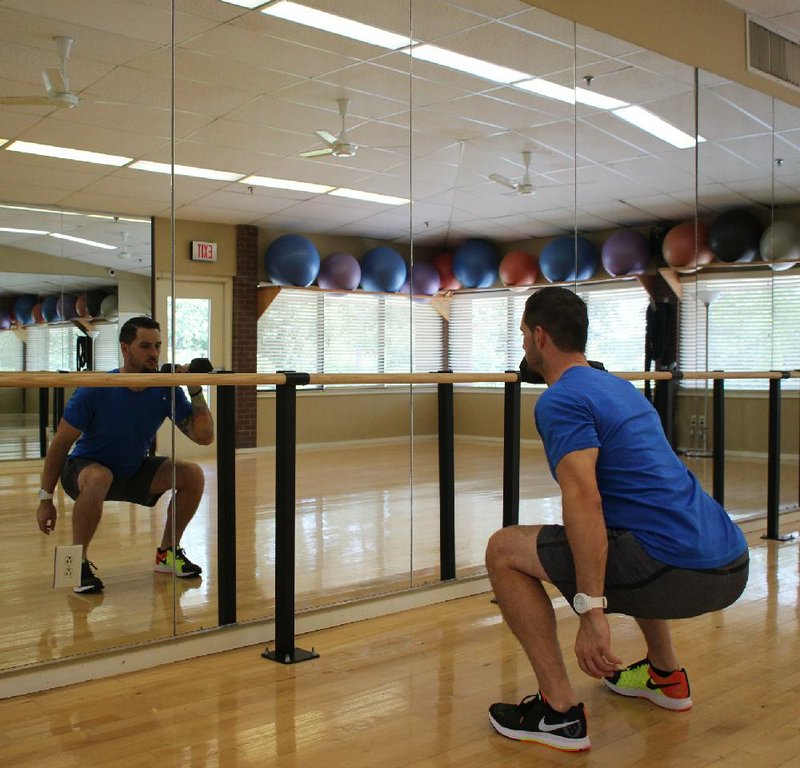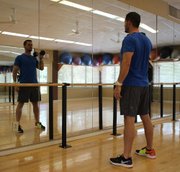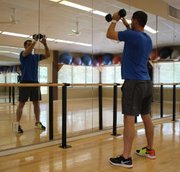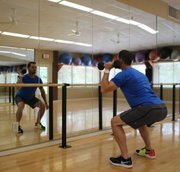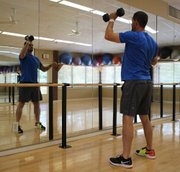Strength training for the lower body can intimidate new -- and experienced -- exercisers. Squats, lunges and dead lifts require very specific techniques to prevent injury, so many people simply avoid them rather than learn the correct methods.
This week, I'll take the fear out of lower body training by outlining a few fundamentals. Plus, I'll introduce a fun way to train the lower body while adding a sporty element.
The most important part of training the lower body is understanding how the hips and lower back work together to create safe, effective movement patterns. The key element of this equation is the lumbar spine posture, which should always have a normal, bow-like, C-curvature during any lower body exercise.
For certain movements, creating a small amount of lordosis in the lumbar spine accomplishes two very important tasks that relate directly to improved mechanical performance. First, it forces the pelvis to rotate forward and into a more neutral position. This causes contraction of the muscles supporting the lumbar spine, thereby adding an additional element of support.
Second, it reduces the amount of vertical "stacking" of the lumbar vertebrae. This is important because stacking vertebrae while adding resistance can result in greater pressure on the vertebral discs and supportive structures. This is why the spinal anatomy is in an "S" pattern to begin with -- to reduce stacking pressure.
So increasing lumbar lordosis helps to accentuate the S pattern and create less overall vertebral stacking.
Assuming the lumbar lordosis is in place, the hips have to be pressed backward during any type of squat or dead lift. Pressing the hips backward will allow one's center of gravity to be maintained at the body's midline rather than in front of it. This optimizes the overall resistance and vastly reduces the chances for injury compared to keeping the hips more forward.
This week's exercise is a good opportunity to practice lumbar lordosis as well as the backward hip press, because it's a squatting motion. The Hot Potato Squat combines a traditional squat movement with a fun little twist.
1. Select one light dumbbell and stand in front of a mirror.
2. Hold the dumbbell in your right hand at shoulder level with the elbow tucked by your side (as if you are in the bottom position of an overhead press).
3. Do a normal squat by bending the hips and knees until your thighs are parallel with the floor.
4. Stand back up quickly, and just as you reach full extension, toss the dumbbell from one hand to the other in front of your face.
5. Go right back into another squat. Continue this pattern for 12 repetitions.
This exercise is a cool way to practice squats with very little resistance and a little coordination challenge. Switching the dumbbell between hands will vary the resistance pattern and keep the core muscles working throughout the movement. Enjoy!
Matt Parrott has a doctorate in education (sport studies) and a master's in kinesiology and is certified by the American College of Sports Medicine.
vballtop@aol.com
ActiveStyle on 07/06/2015
